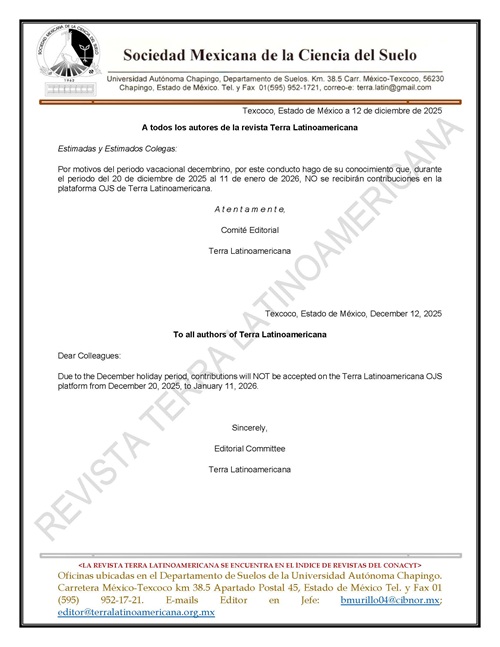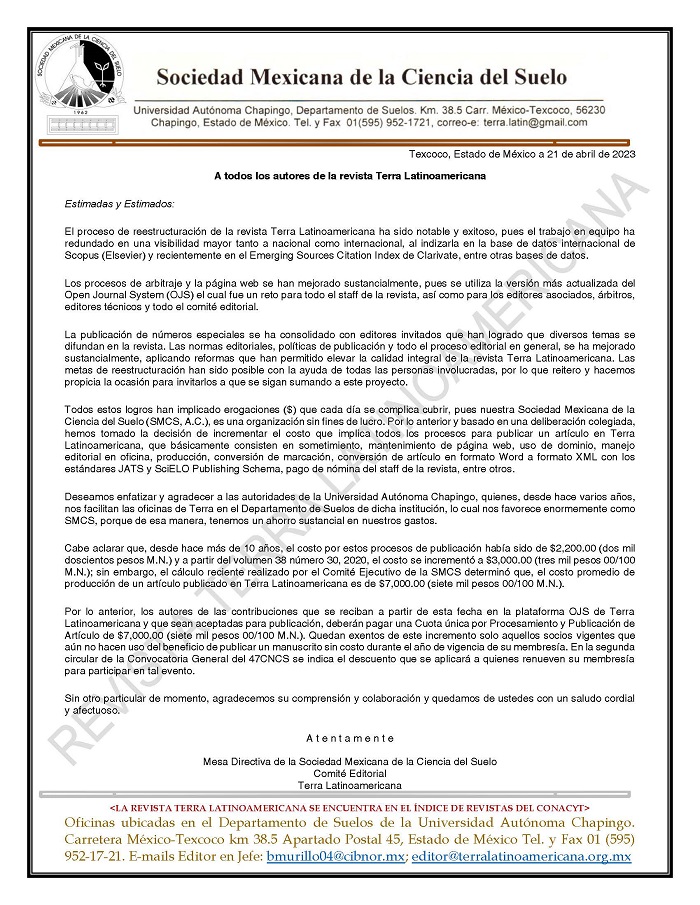Chemical fertilization in sugar beet (Beta vulgaris L.) in the north of Tamaulipas
DOI:
https://doi.org/10.28940/terra.v37i1.390Keywords:
biomasa, raíz, rendimiento, R. solani, sacarosa, SPADAbstract
Sugar beet (Beta vulgaris L.) is a source of sugars. In Mexico, trials have been carried out to evaluate adaptation of the crop as a potential source of biomass, sugar and ethanol. Fertilization is a factor that influences production. The objective of the study was to evaluate the effect of inorganic fertilization on yield and production of soluble solids under irrigation conditions. An irrigation field experiment was established on February 25, 2010 and March 3, 2011, in Río Bravo, Tamaulipas (INIFAP-CIRNE). The variety used was EBO-809 Type N (Normalreich: moderately rich in sugar), with 13 doses of (N‑P) from 150-00-00 to 300-200-00, and the control without fertilization. Urea was the source of (N) and triple superphosphate of (P). Fresh weight (Mg ha-1), chlorophyll index (SPAD), soluble solids (oBrix) and incidence of root rot (%) were evaluated. The factor with the highest statistical value was the fertilization dose (T), explaining 70% of the variance 24% the year (A), and there was no interaction (T × A). Root rot was attributable by Rhizoctonia solani (Kühn), which is negatively associated with yield, due to atypical winter rainfall in 2010. There were no differences between treatments with N-P fertilization. The critical value of N was superior to the control and ≤ to 150 kg ha-1. The concentration of sugars was not related to yield, SPAD or R. solani incidence; moreover, it was inversely proportional to the nitrogen dose.Downloads
Publication Facts
Reviewer profiles N/A
Author statements
- Academic society
- Terra Latinoamericana
- Publisher
- Mexican Society of Soil Science, C.A.

















